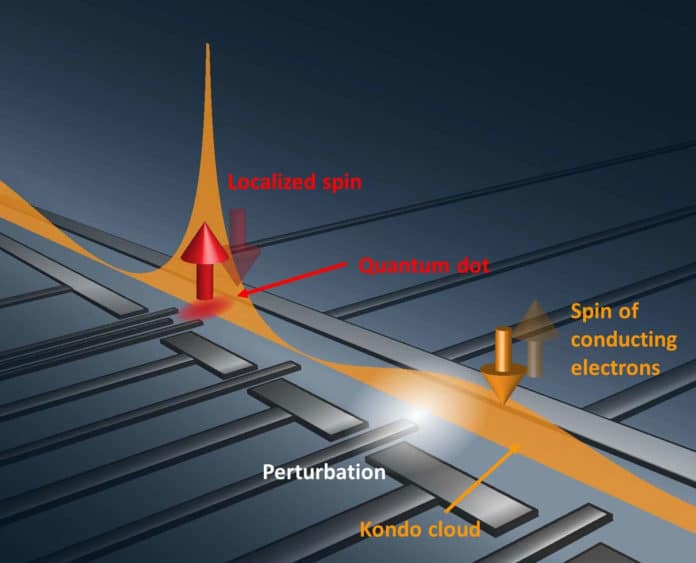When a magnetic impurity exists in a metal, conduction electrons form a spin cloud that screens the impurity spin. This basic phenomenon is called the Kondo effect.
Physicists have been trying to observe the Kondo cloud quantum phenomenon for many decades.
Recently, scientists at the City University of Hong Kong (CityU) have devised a novel device that gauges the length of the Kondo cloud and even allows for controlling it. This discovery acts as a milestone in condensed matter physics and may provide insights for understanding multiple impurity systems such as high-temperature superconductors.
The Kondo effect is a physical phenomenon found during the 1930s. In metals, as the temperature drops, electrical resistance typically drops. Notwithstanding, if there are some magnetic impurities in the metal, it will show the opposite result. Resistance will fall from the first. Be that as it may, when it is below some threshold temperature, the resistance will increase as the temperature decreases further.
Jun Kondo, a Japanese theoretical physicist was the first who solved this riddle half-century ago; thus, the effect is known by his name.
According to Kondo, when a magnetic atom (an impurity) is placed inside a metal, it has a spin. But instead of just coupling with one electron to form a pair of spin-up and spin-down, it combines collectively with all the electrons within some areas around it, creating a cloud of electrons surrounding the impurity. In essence, this is called the Kondo cloud. When a voltage is applied over it, the electrons are not free to move or are screened off by the Kondo cloud, resulting in resistance increase.
How big can the cloud be?
Some fundamental properties of the Kondo effect have been demonstrated tentatively and were seen as identified with the Kondo temperature. In any case, the estimation of the Kondo cloud’s length was at this point to be accomplished. Hypothetically, the Kondo cloud can spread out over several micrometers from the impurity in semiconductors.
Dr. Borzenets, who performed the experimental measurement of this research, said, “The difficulty in detecting the Kondo cloud lies in the fact that measuring spin correlation in the Kondo effect requires the fast detection of tens of gigahertz. And you cannot freeze time to observe and measure each of the individual electrons. Being a researcher who enjoys conducting complicated experiments, he decided to take up this challenge.”
Due to advancements in nanotechnology, scientists were able to fabricate a device that can confine an unpaired electron spin (magnetic impurity) in a quantum dot, like a small conducting island with a diameter of only a few hundred nanometers.
Dr. Borzenets said, “Since the quantum dot is tiny, you can know exactly where the impurity is.”
“Connecting to the quantum dot is a one-dimensional and long channel. The unpaired electron is constricted to couple to the electrons in this channel and form a Kondo cloud there. In this way, we isolate a single Kondo cloud around a single impurity, and we can control the size of the cloud as well.”
The novelty of the system is that by applying a voltage at different points inside the channel with various distances away from the quantum dot, they induced “weak barriers” along the channel.
Scientists observed the resulting change in electron flow and the Kondo effect with varying barrier strength and position.
When there is a change in voltage, the conductance went up and down, no matter where they put the barriers at. And when there were oscillations in conductance, swings in the measured Kondo temperature were observed.
Scientists plotted the oscillation amplitude of Kondo temperature versus the barrier distance from the impurity divided by the ideal cloud length; they found that all their data points fall onto a single curve, as theoretically expected.
Dr. Borzenets said, “We have experimentally confirmed the first theoretical result of the Kondo cloud length, which is in the micrometer scale. For the first time, we have proved the existence of the cloud by directly measuring the Kondo cloud length. And we found out the proportionality factor connecting the size of the Kondo cloud and Kondo temperature.”
Scientists, in the future, aims to determine different ways to control the Kondo state. The research is published in Nature.
